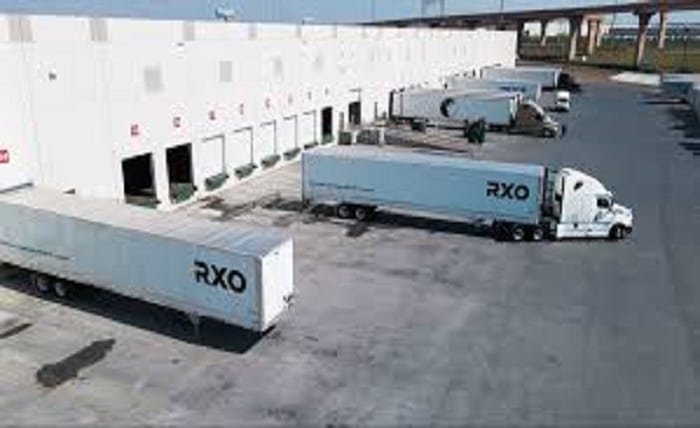RXO: Revolutionizing the Landscape of Modern Medicine

Introduction
In the ever-evolving landscape of modern medicine, innovative technologies continually emerge to revolutionize healthcare delivery and patient outcomes. Among these advancements stands RXO, a transformative force poised to reshape the way we approach medical treatment and diagnosis. From enhancing precision medicine to streamlining drug discovery, RXO holds immense potential to drive progress and innovation across various facets of healthcare. In this comprehensive guide, we delve into the intricacies of RXO, exploring its origins, applications, and the profound implications it holds for the future of medicine.
RXO: A Primer
RXO, short for Robotic X-ray Observer, represents a cutting-edge fusion of artificial intelligence (AI) and radiology. At its core, RXO leverages advanced machine learning algorithms to analyze medical imaging data, including X-rays, CT scans, and MRIs, with unprecedented accuracy and efficiency. By harnessing the power of AI, RXO can rapidly interpret complex imaging studies, assisting healthcare providers in making timely and informed clinical decisions.
The Evolution of RXO: From Concept to Reality
The journey of RXO from conceptualization to realization is a testament to the relentless pursuit of innovation in healthcare. Originally conceived as a solution to address the growing demand for radiology services and the shortage of skilled radiologists, RXO has undergone extensive development and refinement to become a cornerstone of modern medical imaging. Through iterative advancements in AI algorithms and computational power, RXO has evolved into a sophisticated tool capable of augmenting the diagnostic capabilities of healthcare professionals.
Applications of RXO in Clinical Practice
The versatility of RXO extends across a myriad of clinical applications, spanning diagnostic imaging, treatment planning, and therapeutic interventions. In diagnostic radiology, RXO assists radiologists in detecting and characterizing abnormalities in medical images, facilitating early detection of diseases such as cancer, fractures, and pulmonary conditions. Moreover, RXO plays a pivotal role in guiding interventional procedures, enhancing precision and safety during surgeries and minimally invasive interventions.
Advancing Precision Medicine with RXO
Precision medicine, characterized by tailored healthcare interventions based on individual variability in genes, environment, and lifestyle, represents a paradigm shift in patient care. RXO contributes to the realization of precision medicine by enabling the precise characterization of disease manifestations and treatment responses through detailed analysis of medical imaging data. By deciphering subtle nuances in imaging findings, RXO empowers clinicians to personalize treatment strategies and optimize patient outcomes.
Enhancing Drug Discovery and Development
The process of drug discovery and development is notoriously complex and resource-intensive, with high attrition rates and lengthy timelines. RXO addresses these challenges by expediting the preclinical and clinical evaluation of novel therapeutics through advanced imaging-based biomarkers. By providing quantitative assessments of drug efficacy and safety in preclinical models and clinical trials, RXO accelerates the translation of promising drug candidates from the laboratory to the bedside, ultimately benefiting patients worldwide.
Overcoming Challenges and Limitations
Despite its transformative potential, the integration of RXO into clinical practice is not without challenges and limitations. Technical hurdles, such as ensuring interoperability with existing healthcare infrastructure and addressing data privacy concerns, must be overcome to realize the full benefits of RXO. Moreover, the reliance on AI algorithms raises questions regarding transparency, accountability, and the potential for algorithmic biases. However, proactive measures, including robust validation studies and regulatory oversight, can mitigate these challenges and foster the responsible deployment of RXO in healthcare settings.
Future Directions and Innovations
The future of RXO holds boundless possibilities, with ongoing research and development poised to unlock new frontiers in medical imaging and diagnostics. Emerging technologies, such as multi-modal imaging fusion and real-time image analysis, promise to further enhance the capabilities of RXO and expand its utility across diverse clinical scenarios. Additionally, collaborative efforts between academia, industry, and regulatory bodies are essential to foster innovation and ensure the seamless integration of RXO into the fabric of modern healthcare delivery.
The Ethical Implications of RXO
As with any disruptive technology, RXO raises important ethical considerations that warrant careful examination. The automation of diagnostic processes by RXO has profound implications for the role of healthcare professionals, patient autonomy, and the allocation of resources. Moreover, the ethical use of patient data in training AI algorithms and the potential for unintended consequences underscore the need for ethical guidelines and governance frameworks to safeguard patient interests and uphold ethical principles in the era of RXO-driven healthcare.
Conclusion
In conclusion, RXO represents a watershed moment in the evolution of medical imaging and diagnostic radiology. By harnessing the power of AI to interpret complex medical images with unparalleled accuracy and efficiency, RXO holds immense promise to revolutionize healthcare delivery, improve patient outcomes, and advance the frontiers of precision medicine. While challenges and ethical considerations remain, the transformative potential of RXO far outweighs the obstacles, paving the way for a future where technology serves as a catalyst for innovation and excellence in patient care.
FAQs
1. What is RXO, and how does it differ from traditional medical imaging techniques? RXO, or Robotic X-ray Observer, is a revolutionary technology that combines artificial intelligence with medical imaging to enhance diagnostic accuracy and efficiency. Unlike traditional medical imaging techniques, which rely on manual interpretation by radiologists, RXO employs advanced machine learning algorithms to analyze imaging data with unprecedented speed and precision.
2. What are the primary applications of RXO in clinical practice? RXO finds diverse applications in clinical practice, including diagnostic radiology, treatment planning, and guiding interventional procedures. It assists healthcare providers in detecting and characterizing abnormalities in medical images, facilitating early diagnosis and personalized treatment strategies for patients.
3. How does RXO contribute to precision medicine? RXO plays a pivotal role in advancing precision medicine by enabling the precise characterization of disease manifestations and treatment responses through detailed analysis of medical imaging data. By deciphering subtle nuances in imaging findings, RXO empowers clinicians to tailor healthcare interventions based on individual patient variability.
4. What are the challenges associated with the integration of RXO into clinical practice? The integration of RXO into clinical practice is accompanied by various challenges, including technical hurdles, data privacy concerns, and the need for regulatory oversight. Additionally, questions regarding algorithmic transparency, accountability, and potential biases must be addressed to ensure the responsible deployment of RXO in healthcare settings.
5. What does the future hold for RXO and its impact on the healthcare industry? The future of RXO is characterized by ongoing innovation and collaboration across academia, industry, and regulatory bodies. Emerging technologies, such as multi-modal imaging fusion and real-time image analysis, promise to expand the utility of RXO and further enhance its impact on healthcare delivery, patient outcomes, and the advancement of precision medicine.




